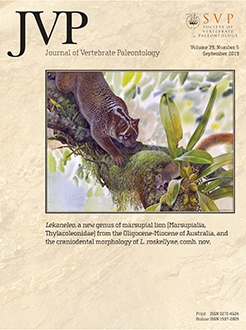Although the North Pacific has been a key area for investigations into seabird ecology and evolution, the seabird fossil record has been scarce on the western North Pacific. This study describes new seabird remains from the Pleistocene Kazusa and Shimosa groups, central Honshu Island, Japan, adding new insight into the Pleistocene seabird fauna in the region. Avian materials from four formations (the Hirayama, Ichijiku, and Mandano formations in the Kazusa Group and the Kiyokawa Formation in the Shimosa Group) include at least nine species of seabirds and other waterbirds: Melanitta fusca, Clangula hyemalis, Anatidae? gen. et sp. indet., Gavia stellata?, Phoebastria cf. albatrus, Puffinus cf. puffinus complex, Phalacrocoracidae gen. et sp. indet., Alle cf. alle, and Mancalla sp. Most of these occurrences represent the oldest records for the respective taxa in the western North Pacific. The occurrence of Alle from the Ichijiku Formation (∼0.7 Ma) is especially noteworthy, because modern Alle alle, the sole recognized member of the genus, is rarely recorded in the Pacific today. This record suggests that in the middle Pleistocene, the taxon was probably more widespread in the North Pacific than it is today. Therefore, the present-day distribution of these seabirds is likely a relict of past ones, as has also been documented in some other seabird lineages.
How to translate text using browser tools
14 April 2020
Seabirds (Aves) from the Pleistocene Kazusa and Shimosa Groups, Central Japan
Junya Watanabe,
Akihiro Koizumi,
Ryohei Nakagawa,
Keiichi Takahashi,
Takeshi Tanaka,
Hiroshige Matsuoka
ACCESS THE FULL ARTICLE






